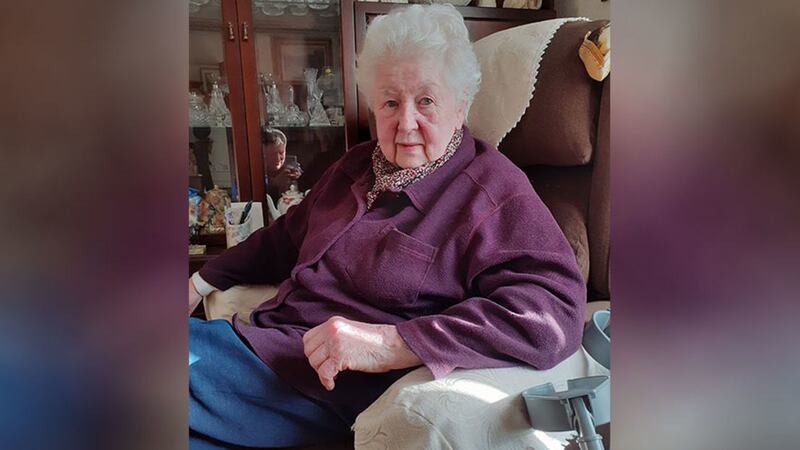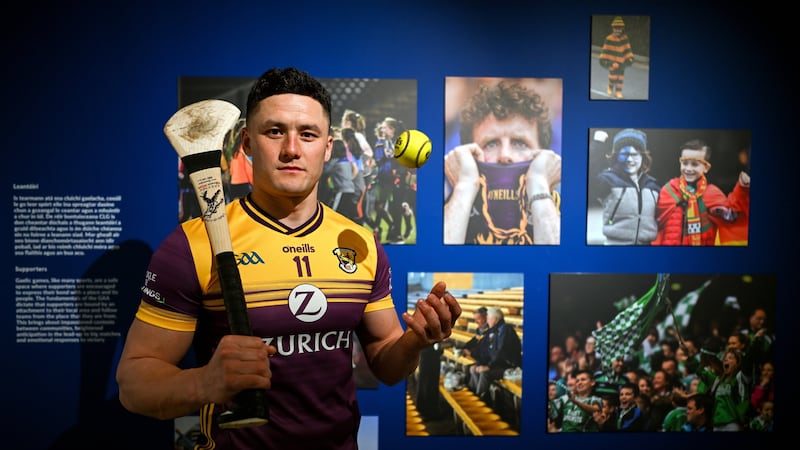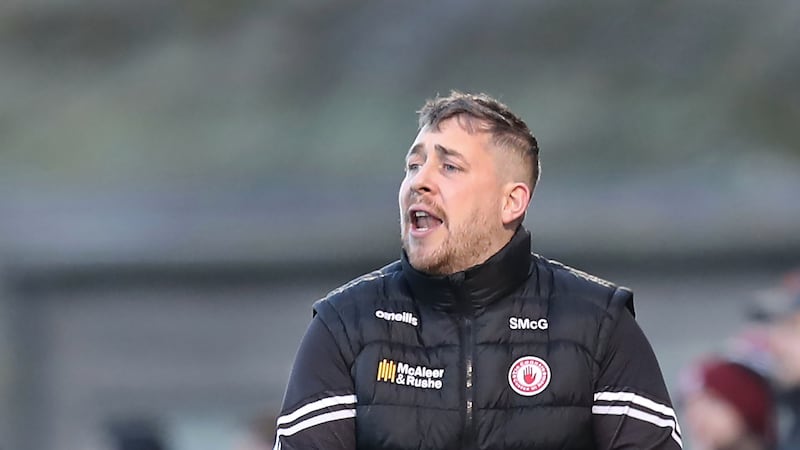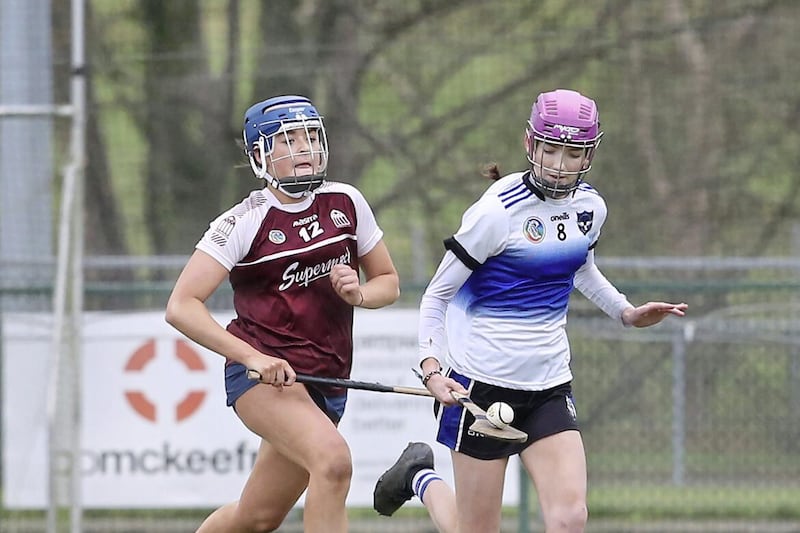AHOGHILL will play Lavey this weekend in an Ulster club final 50 years almost to the day when they last featured in an Ulster club camogie final.
That was back in 1969 when the Antrim champions beat Eglish in the Ulster final and this week “the best camogie player I have ever seen” recalled that victory in looking back across a camogie career that extended to over two decades as Antrim full-back and appearances in ten All-Ireland senior finals in Croke Park, plus a replay.
Moya Forde chuckles to herself.
“I never actually saw that written down. Apparently it was in one of the national papers after an All-Ireland semi-final we played in Cork.
“I remember the game well though, don’t ask me the year. But it was one of those games when just everything you do works out right. I could do nothing wrong and Antrim won.
“I went to club training in Ahoghill a couple of days later and people were saying to me that it was in the Irish Press or Irish Times. People seemed to remember it and even still there will be somebody who will come up to me and say it.
“My father was born and reared in Ballylanders on the Limerick-Cork border. He came to teach in The Braid and he was very keen on all sport, Gaelic games and athletics in particular. He played rugby for Ballymena and was on the team that won the first Town’s Cup (1928). We were encouraged to play everything.”
Moya’s brother Donagh played both hurling and football for Antrim, was an Ulster decathlete champion, played rugby at representative level while a vet in Lancashire and even won an All-Ireland Intermediate hurling medal with Galway where he eventually settled.
Moya played with her older brothers and sisters with “home-made hurls cut from a tree in the garden” and when someone decided to start a camogie team in The Braid, a small parish halfway between Ballymena and Carnlough, she was put into goals “because they were afraid I would get hurt outfield”.
When she moved to St Louis Ballymena her game progressed significantly under a Cork-born nun.
“When we got off the bus before class, she was down on the pitch and we played away. She made us swing left and right and she ran camogie class leagues. And then there was the school team.”
At this time there was only one competition, the Ulster senior schools’ championship, and St Louis had won it in 1946 and 1947 with girls, such as the Dooey twins, who were also members of Antrim teams winning All-Ireland senior titles.
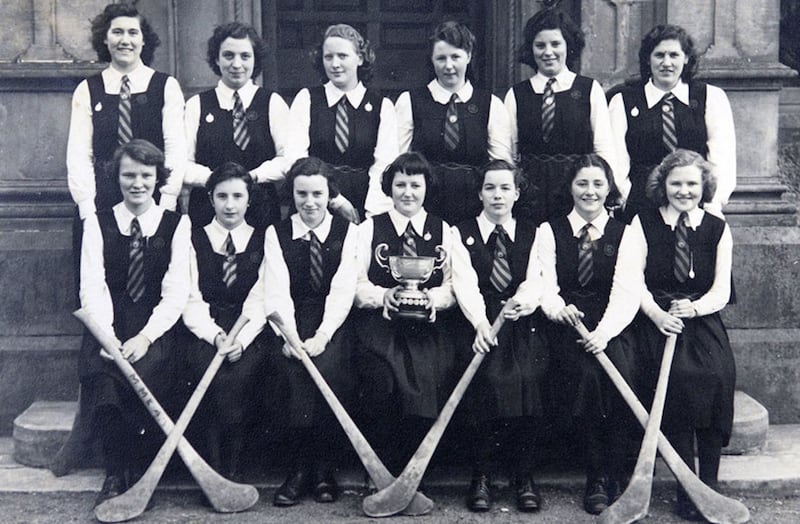
Moya collected three winners’ medals 1949-51, the last of those captained by her sister Fionnuala who also played with Moya in Ahoghill and Antrim winning teams. Moya was to follow her as school captain in 1952.
“But we didn’t get playing that year. We lost our pitch to rebuilding in the school and we had nowhere to train.”
However she was already an Antrim senior playing in her first All-Ireland final in Croke Park in 1950.
“We beat London in London that year, but it wasn’t the glamour trip you would think. We went from Larne to Stranraer on the boat and then got the train to London.
“When we got there late at night, all the shops were closed and we had nothing to eat. Then after the game the next day, it was straight back to the station for the return journey. We didn’t see too much of London.
“Although I had been playing full-back earlier in the championship, I was moved to the wing for the final in Croke Park.
“I suppose it was a big thing playing in Croke Park, but when you don’t win, it isn’t that big. At half-time we were getting well beaten and I moved into full-back for the second half and that is where I stayed until I quit camogie in the early ‘70s.”
Dublin was the top team for almost her entire inter-county career, winning 18 of the 19 titles from 1948-1966. Antrim won the other in 1956, but the Saffrons lost eight finals to them in that same period, as well as a few semi-finals.
“We were their main opposition. They were very good and we had some great battles with them, mostly in Croke Park.
“I really can’t remember individual games. If I had played just one year with Antrim, I would have remembered every game. But one year just rolled into the next.
“I remember winning in 1956. Teasy (Kearns) was in goals. She was only 14, but I knew her well from playing Dunloy in club camogie and I knew she was a super player. She was there for the next dozen years and we won a second All-Ireland together in 1967.
“We beat Dublin in Belfast in the 1956 semi-final and then Cork in the final. When we eventually beat Dublin again (in 1967) it was in a replay and both games were in Croke Park and that was great too.”
“We had some wonderful players around that time; Sue Ward, Máiréad McAtamney, Eithne Dougan. I remember Antrim being written off before it because our defence was supposed to be too old. Including Teasy in goals, five of us were there from 1956. But we proved them wrong!”
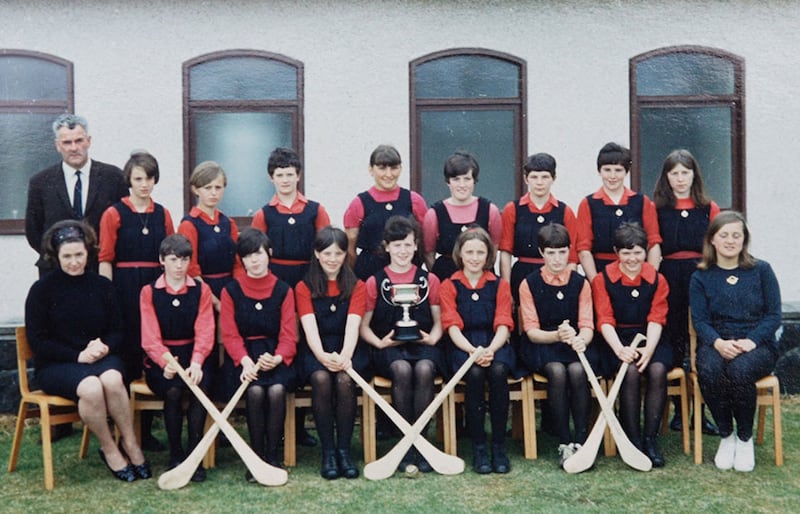
Dublin fell heavily after that defeat, reaching just three more finals and collecting the title only once more, in 1984. Antrim also appeared in just three more finals, winning their sixth and final senior All-Ireland in 1979.
Moya’s last All-Ireland final was in 1969, a two points’ defeat to Wexford. But that was the year that Ahoghill delivered.
“The Braid fell away as quickly as it started. There wasn’t the numbers there to sustain a team. St Louis was my outlet and then the county.
“But there was a Fr McGuigan out in Ahoghill and he was pushing camogie for the girls in the parish. He knew about us in school and asked us to come out and play and that is how I ended up with Ahoghill.
“Ahoghill had a lot of good players in my time, the two Mary McFaul (big Mary and wee Mary), Margaret and Bridget McFaul, Sarah O’Neill, Kathleen Neeson, Maureen Graham, Lily Scullion.
“There were a lot of good club teams around at the time and Deirdre became very strong in the 1960s.”
The Belfast based club had already collected back to back titles in Antrim when in 1964 an Ulster club championship and also All-Ireland club championship was developed. 1n ’64 and again in ’65, Deirdre reached the national final where they were beaten firstly by Celtic of Dublin and then St Patrick’s from Tipperary.
They didn’t make it back into the All-Ireland final, but they stretched their Ulster run to five in a row and their Antrim collection to seven in succession, before Ahoghill broke the run in 1969. It was to be Ahoghill’s second and, to date, their last Antrim senior title.
“Again I can’t remember too much about individual club games. I do remember playing Greenlough at that time. It must have been in the Ulster championship and I had coached nearly all the Greenlough girls when I taught in St Mary’s Clady. We won six or seven Ulster schools’ Cups around that time.
“We beat Eglish in the Ulster final and I remember scoring a goal straight from a poc out.
“Then we went to Limerick to play Ahane. We got a good start in that game, I scored a goal from a free. But Lily Scullion, who had scored another goal, got injured. She could have played on and she would tell you that still, but they wanted our scoring threat off the pitch.
“We lost – but not by much in the end.”
Fifty years on and Ahoghill’s success in last month’s Antrim junior final has paved the way for wins over Down’s Aghaderg and Cavan side Kill and another appearance in an Ulster final – against Derry champions Lavey – this Saturday.
“Oh, yes, I have been following their progress in the paper. I would love to be at the final, but I am not too mobile at the moment. I hope they win. 50 years is a long time to be waiting.”
